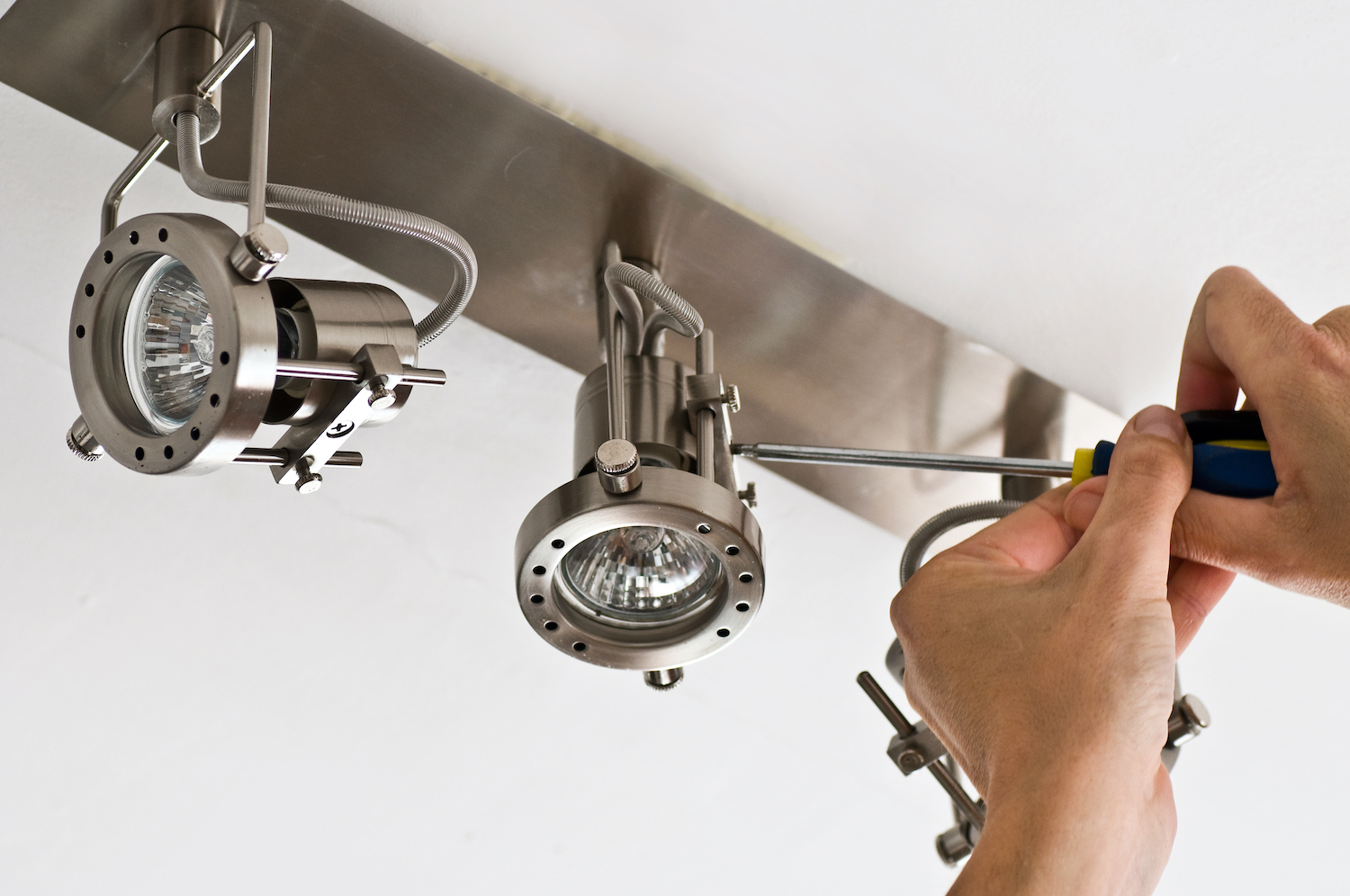Solutions
Industries
Services
About Us
Look Out Security Cameras provides a wide range of electrical services including Video Surveillance Services, Video Maintenance Services, Electrical Repair Services for commercial and residential properties in French Village, MO.
Upgrade and repair for new houses and remodels.
Electrical circuit installations to latest electrical code requirements.
Installation of fixtures to meet any mood or highlight decor.
Wireless or wired computer circuits and telephony lines for home or office.


Service upgrades and replacements for safety and reliability
Code compliant circuit installation, shock protection, and GFI circuit installations.
Underground electrical circuits, concealed mood lighting & sensors.
Concealed audiovisual speaker and cable wiring for multi-room systems.
Learn how we can customize a security solution for your French Village, MO home or business. Contact us today for a no-obligation security assessment.
When is it time to call an electrician?
When you are resetting circuit breakers or changing fuses too often. When you turn on your air conditioner and the lights dim in the room. When your lights flicker or go on and off. When you can smell electricity burning. When you have six electronic devices going into one outlet in back of your electronics center. When you have receptacle outlets overburdened by multi-plug strips. When a three-prong plug needs a two-prong adapter. If you have to run extension cords to plug in electrical devices.
What size service do I install in my home?
Most states call for 100 amps minimum, but with all the new electronic devices, air conditioning and electric heat, I would suggest 200 amps especially in new homes. This also gives you some space for future additions. This is not a job for an unlicensed person to attempt. In most cases it involves replacing everything from the service loop (this is the wire that extends from the top of your meter to the utility tie in ) up to and including the main panel.
Where do you put G.F.I.'s?
Any bathroom or garage outlet within 6' of a sink must be GFCI protected. The code also requires all kitchen outlets for countertop use to be GFCI protected. GFCI outlets must be installed in any area where electricity and water may come into contact, including basements, pools, spas, utility rooms, attached garages and outdoors. At least one GFCI outlet is required in an unfinished basement and for most outdoor outlets.
The are two types of GFCIs in homes, the GFCI outlet and the GFCI circuit breaker. Both do the same job, but each has different applications and limitations.
The GFCI outlet is actually a replacement for a standard electrical outlet. A GFCI is not dependent of a ground to function. It does not measure shorts to the ground, it measures the current difference between the hot and neutral wires. A sudden difference of 5 ma. or more, indicating that there is another path for the electricity to flow through will trip this device. The only downside to this is there may be some nuisance tripping in highly inductive loads like large motors or even fluorescent lamps or fixtures on the same circuit. But the newer models seemed to have corrected this somewhat.
It protects any appliance plugged into it, and can also be wired to protect other outlets that are connected to it. The GFCI circuit breaker controls an entire circuit, and is installed as a replacement for a circuit breaker on your home's main circuit board. Rather than install multiple GFCI outlets, one GFCI circuit breaker can protect the entire circuit. There is a test button and a reset button on these units. If you press the test button the reset should pop out. To reset just push the reset button in.
Not a good idea to put lights on GFCI. protected circuits so you aren't left in the dark if the circuit trips. Generally, equipment such as refrigerators, freezers and sump pumps that cannot go without electrical power for an extended period of time without causing costly losses or property damage should not be placed on a GFCI. protected circuit. GFCIs are very sensitive and are subject to nuisance tripping. GFCI receptacles don't last outdoors even under the best of conditions. Be sure to test the device using the "test" button before you use one.
How much should I attempt on my own?
At The present time most states allow you to do whatever you want in your own home. But doing electrical work yourself is a gamble. How much are you willing to risk to save money. There is a reason why it takes so much training to become an electrician. Do not make a mistake by taking electricity lightly, even the smallest job could be a safety hazard. Why take a chance. Get a professional to do this work.
Also In some states the homeowner can pull his own Electrical permit for work in his single family home, what he does not know is that in case of damage or fire caused by his work, his homeowners insurance will not pay, they will only if the work is done by a licensed Electrical Contractor. You should check with your homeowners Insurance Co., and they should sign a document or something to this effect to acknowledge this when they pull a permit.
The most dangerous time is when you tell yourself. This is easy. I can do it myself. Why should i get an electrician? Than when you don't remember where all those wires went, or your hair is standing straight up, you say to yourself. Well maybe we better call someone to straighten up this mess. Now it will cost you double what you thought you were going to save in the beginning.
How many convenience outlets in each room?
In every kitchen, family room, dining room, living room, parlor, library, den, bedroom, or similar room or area of dwelling units, receptacle outlets shall be installed so that no point along the floor line in any wall space there is more than six feet, from an outlet in that space. This is to prevent the use of extension cords. Outlets are usually placed about 18 inches above floor level. Switches usually go about 48 inches from floor level. For convenience outlets each single receptacle in a single branch circuit is usually figured for 1.5 amps, duplex outlets for 3 amps in estimating total amperage for that circuit. Air conditioners should be on a single dedicated circuit.
How should outlets be installed in a kitchen area?
All 15 and 20 receptacles installed within 6 feet of a kitchen sink or wetbar shall have G.F.C.I. protection. Receptacles in a kitchen used to serve counter tops should be supplied with at least two 20 amp branch circuits, for small appliances. Each fixed appliance (refrigerator, stove, dish washer) shall have its own dedicated circuit. On counter tops 12 inches or wider a receptacle shall be installed so that there is no more than 24 inches between outlets. Receptacles outlets installed to serve island counter tops shall be installed above, or within 12 inches below the counter top. There shall be no more than 24 inches from center line of counter top. No receptacle shall be installed face up on a sink counter top.
What is an AFCI?
Starting January 1, 2002, The National Electrical Code, Section 210-12, requires that all branch circuits supplying 125V, single phase, 15 and 20 ampere outlets installed in dwelling unit bedrooms be protected by an arc-fault Circuit interrupter. Eventually they will be in more areas but the NEC selected to require them on bedroom circuits first because a CPSC study showed many home fire deaths were related to bedroom circuits.
The AFCI (Arc Fault Circuit Interrupter) breaker, will shut off a circuit in a fraction of a second if arcing develops. The current inside of an arc is not always high enough to trip a regular breaker. You must have noticed a cut or worn piece of a cord or a loose connection in a junction box or receptacle arcing and burnt without tripping the regular breaker. As you can guess this is a major cause of fires in a dwelling.
There is a difference between AFCIs and GFCIs. AFCIs are intended to reduce the likelihood of fire caused by electrical arcing faults; whereas, GFCIs are personnel protection intended to reduce the likelihood of electric shock hazard. Don't misunderstand, GFCIs are still needed and save a lot of lives.
Combination devices that include both AFCI and GFCI protection in one unit will become available soon. AFCIs can be installed in any 15 or 20 ampere branch circuit in homes today and are currently available as circuit breakers with built-in AFCI features. In the near future, other types of devices with AFCI protection will be available.
If a GFCI receptacle is installed on the load side of an AFCI it is possible for both the AFCI and the GFCI to trip on a fault if the current exceeds the limit for both devices. It is also possible for the AFCI to trip and the GFCI to not trip since the two devices could race each other. However, in no case is safety compromised.